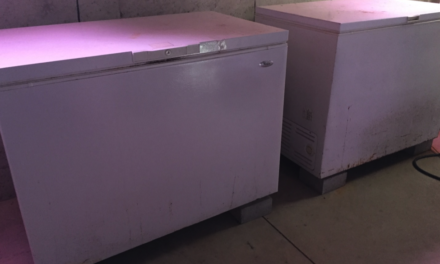Fishing is a great way to create a lifetime of memories. Whether you’re carrying on a family tradition or preparing to create a new tradition Buchheit can help you achieve success with your pond stocking and management. It’s time to create a fish tale that will never be forgotten.
For a pond owner, the most important question is “What type of fish population do I want?” When you can answer this question you can stock your pond and try to achieve this challenging task. The reason this task is so difficult is that you cannot see the fish in your pond to know how many fish or what types and sizes are in your pond. A pond is like a pasture that will produce a given poundage of beef. If you have too many cattle in a pasture they will not grow, become skinny, and deteriorate in health. A pond will give you the same results. The key ingredient to a healthy pond is balance in numbers. So with this in mind, let’s look at some facts that will help you decide the best way to stock your pond.
Stocking Information
Here are some facts and figures that are essential to understanding how to stock and help manage your pond:
1. Each species of fish utilizes a different source of food and space in your pond.
2. Each species has a different carrying capacity in your pond – this is how many pounds of fish an acre of water can support. Sunfish (bluegill, red ear, hybrids, etc.), approximately 200 pounds per acre; cannibalistic fish (largemouth and smallmouth bass, walleye, northern pike, etc.), approximately 50-100 pounds per acre; and catfish, about 100-150 pounds per acre.
3. Cannibalistic species depend on other fish to survive and grow.
4. Depth is important for winter survival but does not help for carrying capacity. Total poundage of fish is related to surface acreage.
Understanding these facts lets us look at the fish we can stock and their advantages and disadvantages.
Stocking Alternatives for a New Pond
There is more than one way to stock a pond, below is a standard plan, plus some alternatives.
Plan A
The classic stocking plan includes stocking bluegill, red ear, largemouth bass, channel catfish, and fathead minnows.
PROS:
1. You will have a self-sustaining reproductive pond (except for fathead minnows and channel catfish).
2. Your bass will grow at a normal rate, depending on the reproduction of your bluegill and red ear.
3. You will be able to let more people fish the pond – bluegill and red ear need to have numbers controlled by fishing. DON’T HARVEST MANY BASS.
CONS:
1. In most cases, an overpopulation of bluegill will lead to a stunted bluegill population.
2. Stunted bluegill leads to a decreased bass population due to the bluegill eating bass fry.
3. The fishing is eventually reduced because fish are not of a catchable size.
STOCKING RATES (Spring or Fall)
• Bluegill (75%) / Redear (25%): 500-1000 per acre
• Channel catfish: 100-150 per acre
• Fathead minnows: 3 lbs. per acre
• Largemouth bass: 100 per acre
Stock Bass in the fall, and be sure to wait at least one summer season before stocking (gives fatheads a chance to reproduce, which will enhance bass growth).
Plan B
Stocking of hybrid sunfish (also called hybrid bluegill, which is a cross of bluegill and green sunfish), channel catfish, largemouth bass, and fathead minnows.
PROS:
1. Hybrid sunfish are 93% male and give you a controlled population.
2. Due to the hybrid vigor, hybrid sunfish are very aggressive and easy to catch – an excellent fish for children.
3. Due to the controlled population rate of hybrids, growth will be excellent – some 1 lb. hybrids are common in the third summer.
CONS:
1. Bass will not get very large since there will not be much forage for them to eat. Common bass size would be 1-2 lbs.
2. You have to limit fishing of hybrids due to their aggressive behavior, or you can catch them out.
3. You have to restock with larger hybrids and cost becomes a consideration.
STOCKING RATES (Spring or Fall)
• Hybrid sunfish: 500-1000 per acre
• Channel catfish: 100-150 per acre
• Fathead minnows: 3 lbs. per acre
• Largemouth bass: 50 per acre
Stock Bass in the fall, and be sure to wait at least one summer season before stocking (gives fatheads a chance to reproduce, which will enhance bass growth).
Plan C
Stock hybrid sunfish, bluegill, red ear, fathead minnows, channel catfish, and largemouth bass.
PROS:
1. Hybrid sunfish are 93% male and give you a controlled population.
2. The bluegill will eventually take over, and you will not have to restock.
3. Bass will grow to a larger size than if stocked with hybrids only.
CONS:
1. A pond will eventually become overpopulated with bluegill unless properly managed.
2. Hybrids will not be able to be restocked.
STOCKING RATES (Spring or Fall)
• Hybrid sunfish: 500 per acre
• Bluegill: 100 per acre
• Redear: 100 per acre
• Channel catfish: 100-150 per acre
• Fathead minnows: 3 lbs. per acre
• Largemouth bass: 50-100 per acre
Stock Bass in the fall, and be sure to wait at least one summer season before stocking (gives fatheads a chance to reproduce, which will enhance bass growth).
Planning is the key to success so after you decide which plan would be best to stock your pond, visit fishdays.buchheits.com to place your order (Spring deadline is May 17, 2018).






